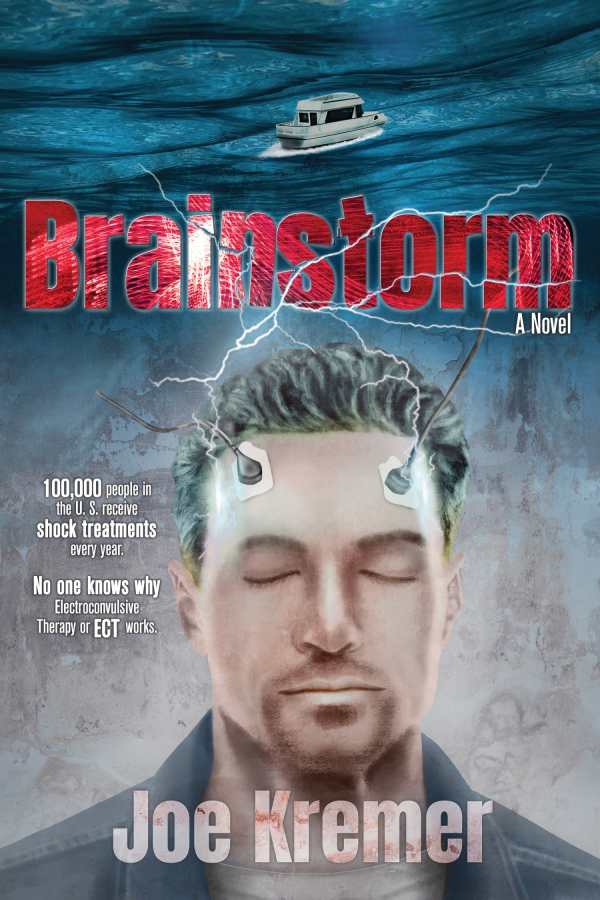Brainstorm
No One Knows Why Electroconvulsive Shock Therapy or ECT Works.
In the science fiction novel Brainstorm, an ordinary man develops extraordinary powers, but still manages to approach his traumas with humor and heart.
In Joe Kremer’s science fiction novel Brainstorm, an EMT obtains extraordinary abilities that soon grow beyond his control.
When Paxton’s wife asks for a divorce, it sends him into a downward spiral. After using alcohol to cope, Paxton attempts suicide and finds himself in a psychiatric ward. He is given electroconvulsive therapy (ECT), which helps with his depression. But his ECT comes with a strange side effect: Paxton can now envision crimes as they occur.
Paxton calls his visions “flashes,” and he begins to report them to the police under the code name “Vulcan.” In between his time as an EMT, dealing with his cancer diagnosis, a budding romance, and a mystery involving his new home, Paxton becomes exhausted. Then the range and frequency of his flashes increases, and Paxton begins to wonder if he can keep up with life after his almost death.
The book’s descriptions of ECT are knowledgeable, revealing a modern medical procedure whose successful results are mysterious even to professionals. Paxton’s experiences with cancer convey how exhausting treatment can be. These medical elements complement Paxton’s science fiction-flavored acquired powers; his powers contrast with his looming sense of mortality, too, resulting in tension, especially as Paxton attempts to balance his sense of responsibility with his personal life.
Paxton is a witty, hardworking lead who is surrounded by thoughtful coworkers and friends. A police communication officer, Malika, becomes his love interest, and their relationship is built on mutual respect and trust. A cute text string between them leads each chapter, injecting endearing comedy into the story. Their supportive dynamic and easy teamwork leads into an investigation around mysterious stashed gold.
Paxton’s EMT partner, Angela, is also a strong character. Their adventures around town help with the book’s world building, conveying the life of the city through character sketches of its residents. Sad scenarios wend in: Paxton and Angela talk people through the deaths of their loved ones, for example, and often work without expecting to learn what happens to the people that they respond to.
Across the novel’s many plotlines, concise transitions make each scene feel clear and distinct. Many chapters end with cliffhangers, holding disparate events together as the novel progresses at an exciting pace. The combination of light, amusing dialogue with heavier contemplative scenes is a comfortable one. Though the novel’s resolution ties all together, it does so following conflicts and surprises.
In the science fiction novel Brainstorm, an ordinary man develops extraordinary powers, but still manages to approach his traumas with humor and heart.
Reviewed by
Delia Stanley
Disclosure: This article is not an endorsement, but a review. The publisher of this book provided free copies of the book and paid a small fee to have their book reviewed by a professional reviewer. Foreword Reviews and Clarion Reviews make no guarantee that the publisher will receive a positive review. Foreword Magazine, Inc. is disclosing this in accordance with the Federal Trade Commission’s 16 CFR, Part 255.

